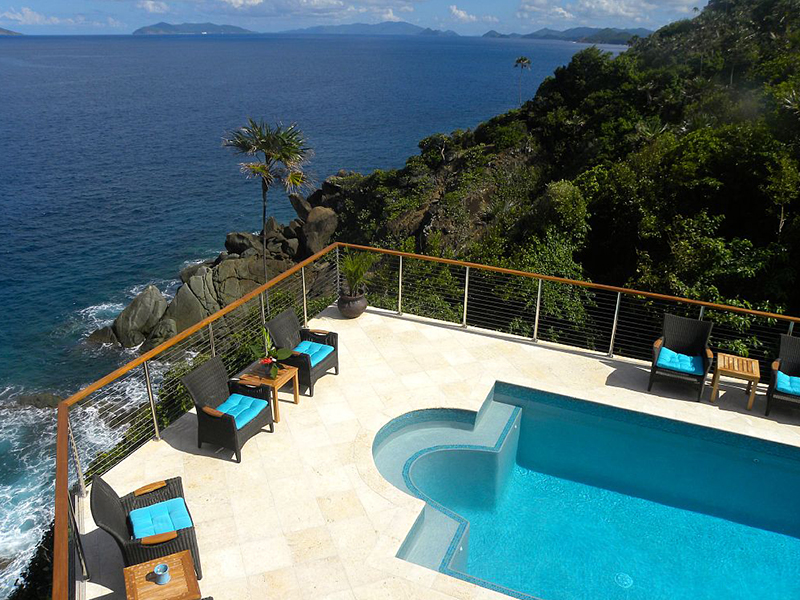The popularity of cable railing continues to grow in leaps and bounds. Infusing a modern twist on today’s decks and terraces. Homes with a view, picturesque decks and commercial building areas are where you’re most likely to come across cable railings. Why is the cable railing system such a big deal? Is it a viable investment? Keep on reading to find out everything you need to know when choosing cable railing!
What is cable railing?
Cable railing is an alternative to traditional metal or wood railing. Cable railing can be made using customary newels and posts with attached cable railing. The use of wire tension to offer protection and stability. Or you can go with a more contemporary design by utilizing metal handrails and posts. It’s also the secret to a hybrid custom style when combined with wood. In a nutshell, these are hand/guard rails in the form of horizontal cables instead of mesh, wood, glass or spindles.
Why should you choose cable railing?
Traditional railings block the view and glass gets dirty and spotted so what else can you do to preserve your view? Cable railing is the best option. Are you are looking to minimize obstruction while beautifying your home by bringing in the natural surroundings? Cable railing is the answer to this concern, rewarding you with open spaces and doing away with bulky wooden rails that compromise your view and other design elements.
It’s an appropriate match for spaces gifted with natural beauty. Cable railings virtually disappear from a distance, keeping your eyes focused on the surrounding views, instead of the rails between. From city skylines illuminated from high viewpoints at night to beachfront porches with seaside views, cable railing helps you enjoy the outdoor life, completely visible from every side.
Are there downsides to worry about?
Most cable railing utilizes bare metal, and though it is usually stainless steel, any bare metal will require some maintenance in highly corrosive environments. There are ways to attend to your cable railing that will minimize your maintenance, beginning from day one.
There are some concerns with climbing the cables, but if installed per our manufacturer specifications this concern is minimized. A safe and carefree cable railing can be yours by following manufacturer instructions and paying attention to safety and maintenance guidelines.
Wood vs. Metal Cable Railing System Comparison
There is a clear distinction between wood and metal systems. For example, recommended installation techniques, components used, overall ambiance, and aesthetic value. These factors are just a few of the key differences between the two. Both metal and wood are suitable for the condition that the rail posts can handle the tension of the wires. As well as the assembled railing meeting all stress requirements per building code.
Metal is generally stronger than wood which allows the use of posts that are slimmer than their wood comparative. However, geometry and metal type play a large roll in this by equation. With metals, a post must have a calculated shape, thickness, and associated maximum height to provide the required strength. Wood post, on the other hand, are specified using general rules. For instance, a 4 x 4 is the smallest wood post useable for cable railing.

Defined by its minimalistic, sleek character, metallic cable railing with stainless steel handrails and posts may exude a more industrial tone. Wood posts paired with cable, on the other hand, combine contemporary elegance and traditional warmth creating an earthier, warmer feel. Both are great options when choosing cable railing system. Your choice depends on the look desired. One should not overlook the popular option of combining the two elements with metal posts combined with wood top rails, or wood post combined with stainless steel railing
Code Compliant Cable Railing System
Building code restrictions limited horizontal railing use in the past, cable railing systems included. The ICC (International Code Commission) later on nullified this “ladder law” and it’s no longer part of the IRC (International Residential Code). Even so, any municipality or state is at liberty to interpret existing IBC (International Building Code) and IRC as well as come up with their own code. Discussing your plans with the local code enforcement is key to seek approval before you begin installation, not after.
The industry-standard basic specifications are cable spacing of 3-inch max, post spacing of 4-foot max and max length cable runs of 50 feet.
Maintenance Tips
316L stainless steel is the best when it comes to stainless steel cable railing systems. This option offers low maintenance, maximizes durability, and holds up well in harsh environments. Environmental exposure, such as salty water, can sometimes discolor stainless steel and there are differences in material used by manufacturers.
The cleanliness of the material before and immediately after install is the greatest factor in determining how well your cable railing will hold up in a harsh environment. Cleaning cable railing components with car wash soap is usually the best maintenance, but if staining persists we have products and instructions for eliminating this.
To Summarize Choosing Cable Railing
As you can see, cable railing is a great option for your home or business. Why not try it out today and see for yourself? Contact us today to get started on your railing project.